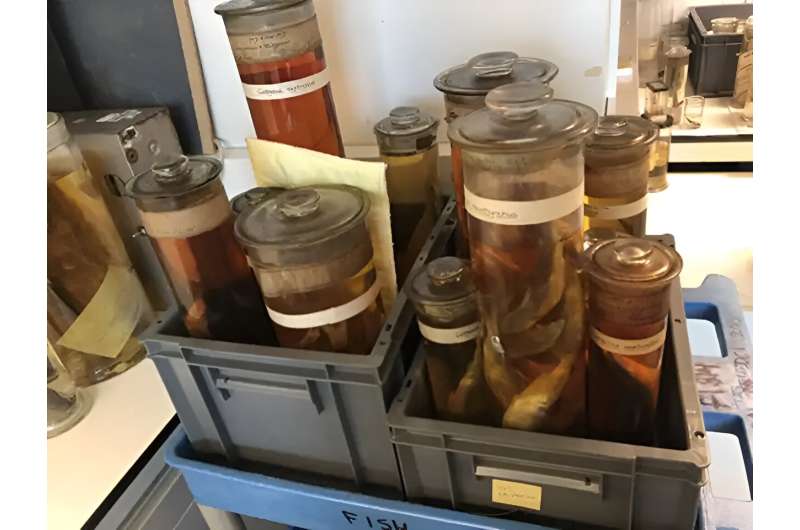This article has been reviewed according to Science X's editorial process and policies. Editors have highlighted the following attributes while ensuring the content's credibility:
fact-checked
peer-reviewed publication
trusted source
proofread
Officially extinct fish is alive and well, according to DNA analyses

The houting, a fish species that lived in North Sea estuaries and is officially extinct, turns out to be alive and well. Researchers from the University of Amsterdam and the Natural History Museum London extracted DNA from multiple houtings conserved in the museum, up to 250+ years old. Next they compared the DNA of these museum fish with DNA from various currently occurring sibling species. The biologists found hardly any genetic difference between houting and a species called European whitefish. Since this species is still common, houting therefore isn't extinct.
In a recent publication in the journal BMC Ecology and Evolution, the researchers describe how they isolated mitochondrial DNA from the fish. They even managed to obtain a small piece of DNA from a dried North Sea houting from 1754 that was used by Linnaeus for the official species description. Next they used the DNA to create a phylogenetic tree, in which all examined houting (Coregonus oxyrinchus) ended up in the same group as the European whitefish (Coregonus lavaretus).
Not extinct
According to the researchers, houting is therefore not a separate species. First author Rob Kroes of the University of Amsterdam says, "The European whitefish is fairly widespread in Western and Northern Europe, both in freshwater rivers and lakes, estuaries and the sea. Because we found no species difference between houting of the past and today's European whitefish, we do not consider the houting to be extinct."
So how is it possible that the houting was officially declared extinct in 2008? Kroes says, "It often happens that there is confusion as to whether animals are one species or not. Especially when fish are involved. They often have a lot of variation in morphological traits within a species. In this case, biologists long thought that houting is a different species from the European whitefish due to the length of the snout and the number of gill rakers. But these traits are simply not suitable to say that houting is a different species. Our DNA research now clearly shows that it isn't."
Name change
A change of the official Latin species name seems to be in order. However, a definitive adjustment of the name requires a bit of additional research on the DNA of the dried fish from 1754. According to the researchers, this will be difficult to do.
Kroes states, "The DNA is old and damaged, but I think we should try. At the moment, the protected status of various coregonids is a mess. According to the IUCN, North Sea houting is extinct; at the same time, there are various European nature laws that state that both houting and European whitefish must be protected. So we are actually protecting an extinct species that is just swimming around at the moment."
More information: R. Kroes et al, Phylogenetic analysis of museum specimens of houting Coregonus oxyrinchus shows the need for a revision of its extinct status, BMC Ecology and Evolution (2023). DOI: 10.1186/s12862-023-02161-7
Journal information: BMC Ecology and Evolution
Provided by University of Amsterdam

















